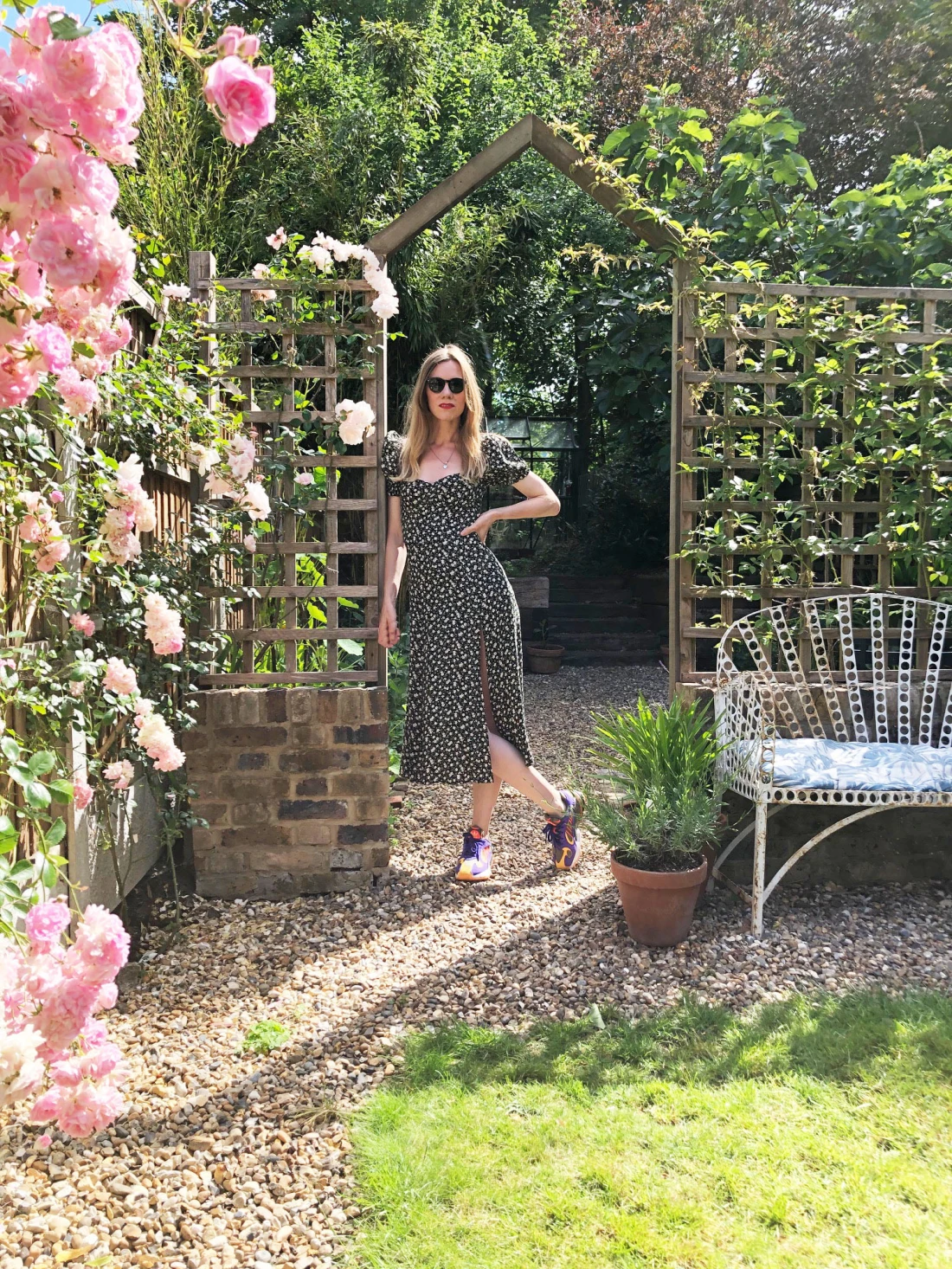
Here I am enjoying one of the best moments of the gardening year – that first flush of flowers on the roses. It’s almost too much for the senses when suddenly all the buds open and you find yourself in a sea of frothy petals and heavenly scent. To get good blooms this summer you need to put in a little bit of work now. January is the perfect time to prune roses here in London, if you live somewhere colder you may need to wait until February or March. Better to prune late than not at all but do try to get it done before the roses put on too much new growth. Rose pruning is one of those jobs that can seem a bit intimidating but really it is quite straight forward and once you get used to the idea of cutting to improve the shape and vigour of the plant, it is quite enjoyable.
There are lots of great resources if you want to find out about traditional rose pruning. The RHS have straightforward advice and the queen of roses Katya @london_blooms explains the basic principles really well here. The main things to remember is that by making cuts you stimulate the plant to create side shoots which will give you flowers. Roses are really vigorous and will grow back quickly even if you cut them back to the base so don’t be nervous – chop away! And one more really important thing: remember to clean and sterilise your tools between each plant to avoid spreading any diseases.
Now here’s the thing. I have learned that gardening is a bit like cooking. You start by following the recipe closely until you get a feel for how a dish comes together. Then, as you get more confident, you can start to tweak the method and ingredients and come up with a version of the dish that suits you and your taste best. As long as you follow a few basic rules, it doesn’t matter what you do to get to the end result. And that’s when it gets fun. With gardening, it’s exactly the same. There are tons of different ways of doing things and you choose what suits you and your garden best.
With my roses I have followed the classic principles and learned to prune in that textbook way. Then, a few years ago, I went to Sissinghurst in May and was super intrigued by the shapes the gardeners had created with the roses. They looked nothing like the pointy sticks I had at home, instead the branches were swooping and curving. I can’t seem to find many photos of the roses from that trip but here’s one. It shows a rose trained along a fence with the branches bent into arches, each one tied to the one below. You can clearly see the side shoots that are growing upwards. That’s what it’s all about. When you bend a branch sideways, you encourage it to create more side shoots which means you get more flowers. Also, the rose looks really beautiful even when the branches are completely bare.
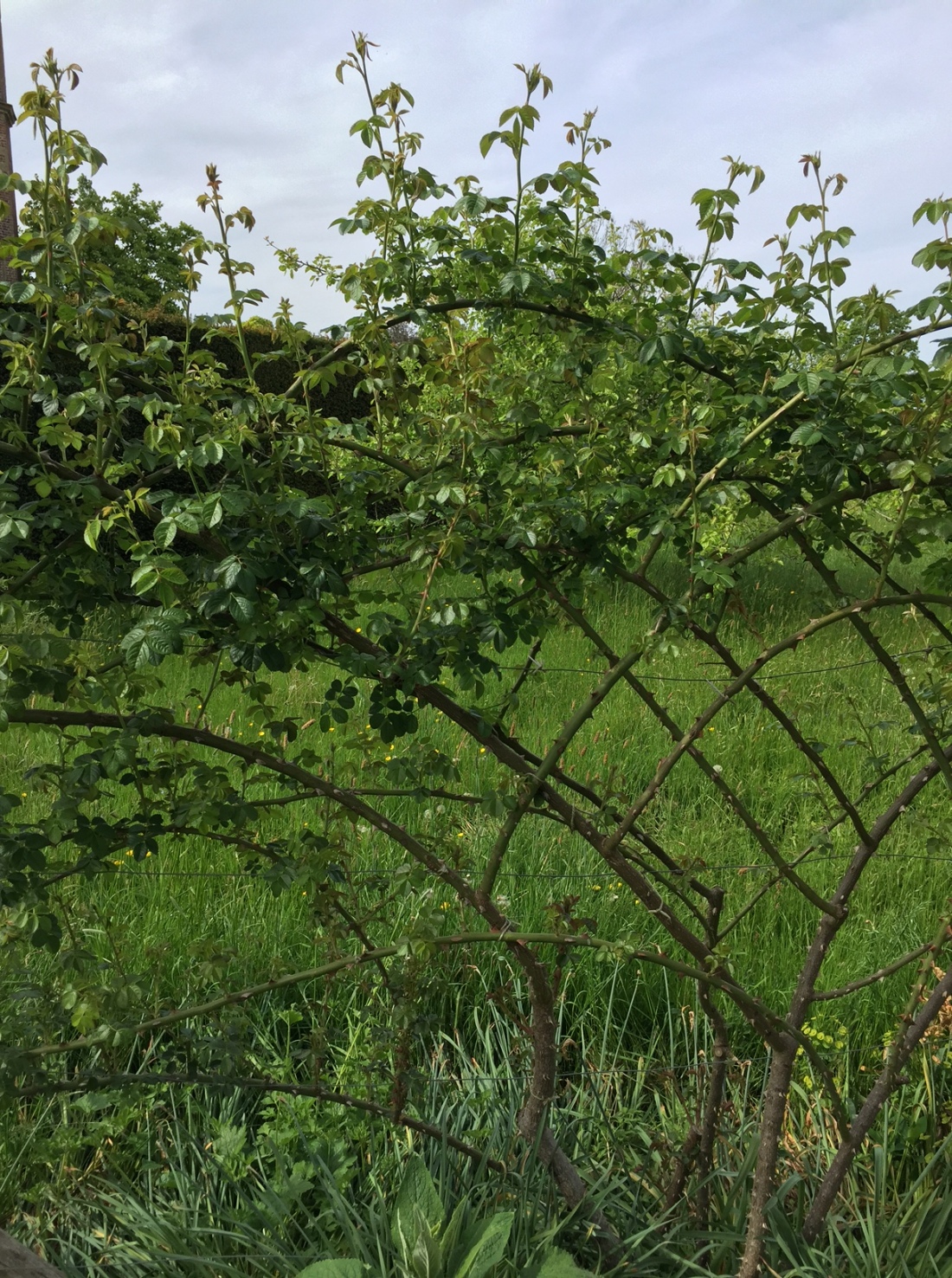
This year I have been reading a lot about rose pruning techniques and found so much amazing inspiration – there are lots of gardeners experimenting and creating fun and completely stunning things. Here are some of my favourite examples.
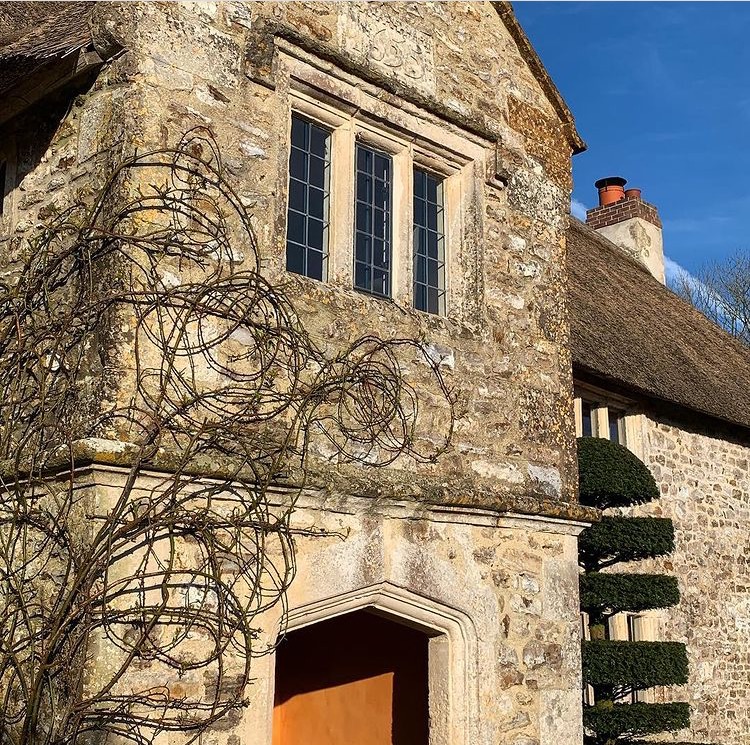
Will Smithson made this gorgeous swirly shape at South Wood Farm. This will work with any climber that has fairly flexible stems. Ramblers are perfect, they are really easy to twist and bend.
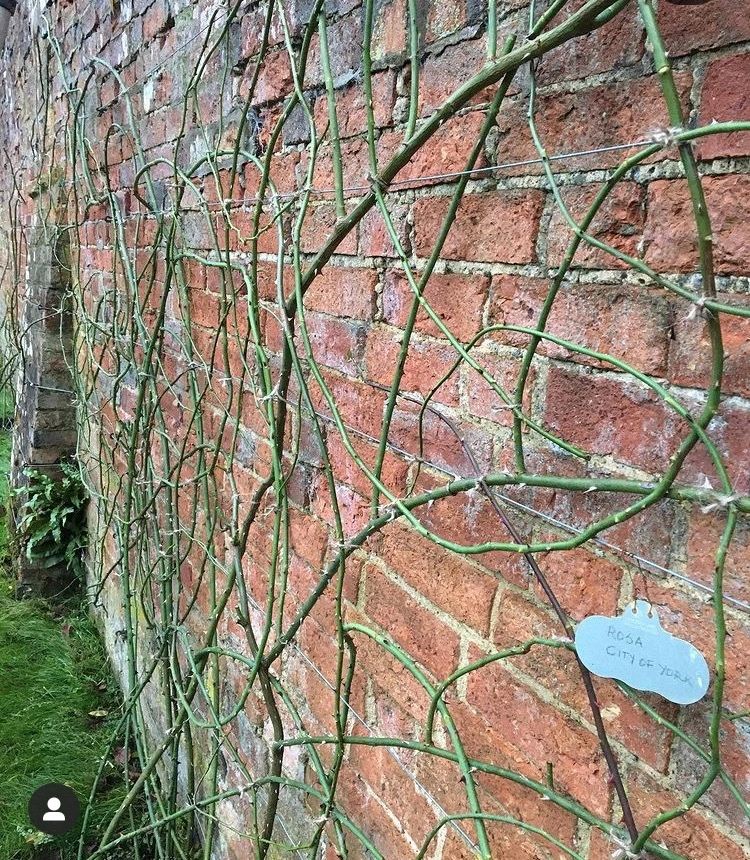
Intricate lattice shapes by Jenny Barnes.
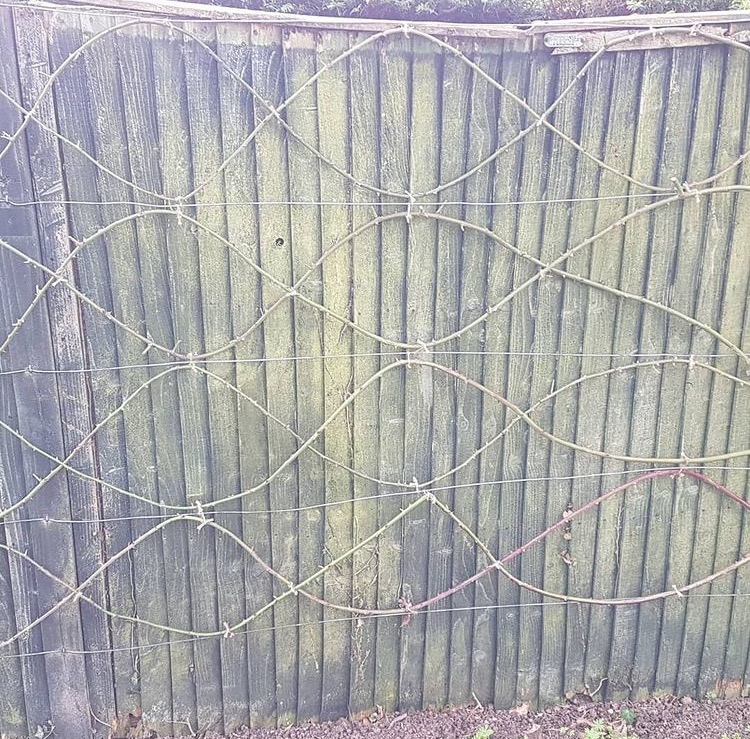
Perfect waves at Barnsdale Gardens, image by Natasha McEwen.
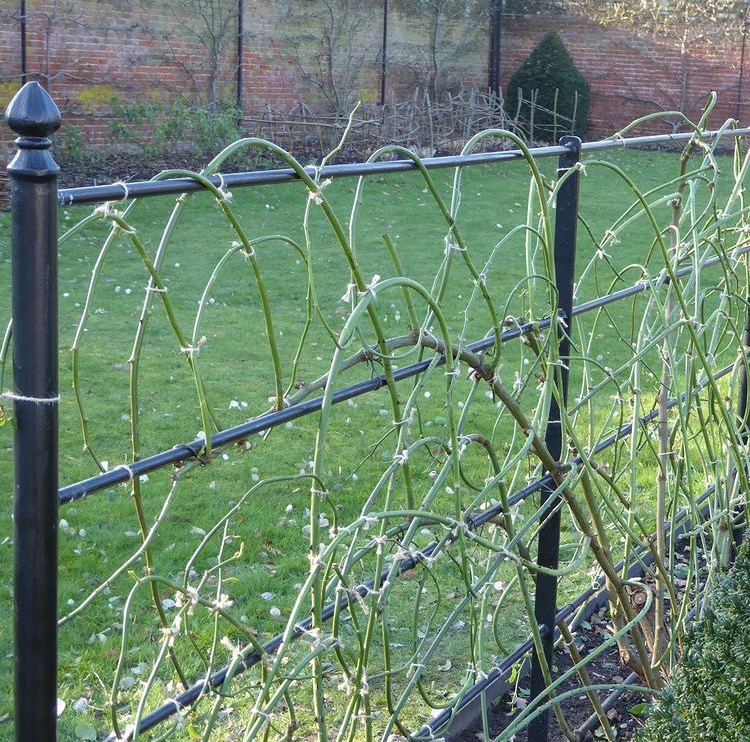
Look at this fence by Rachel Burbidge – imagine when it’s in flower! Amazing.
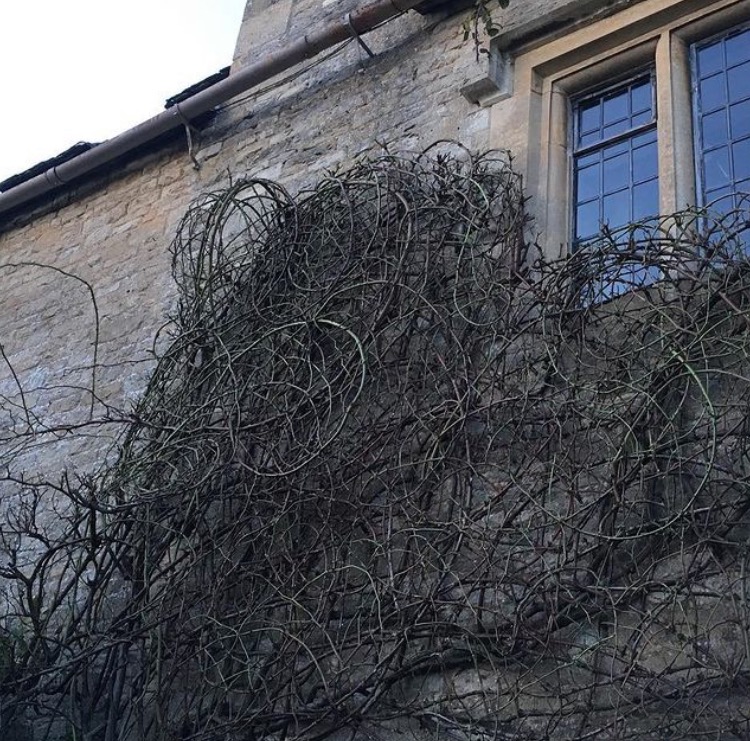
Ok so this is when it gets really interesting. Jenny Barnes has taken things to another level, building up layers of spiralling stems and taming this humongous rambler into submission. How does that look in flower you wonder? Here you go:
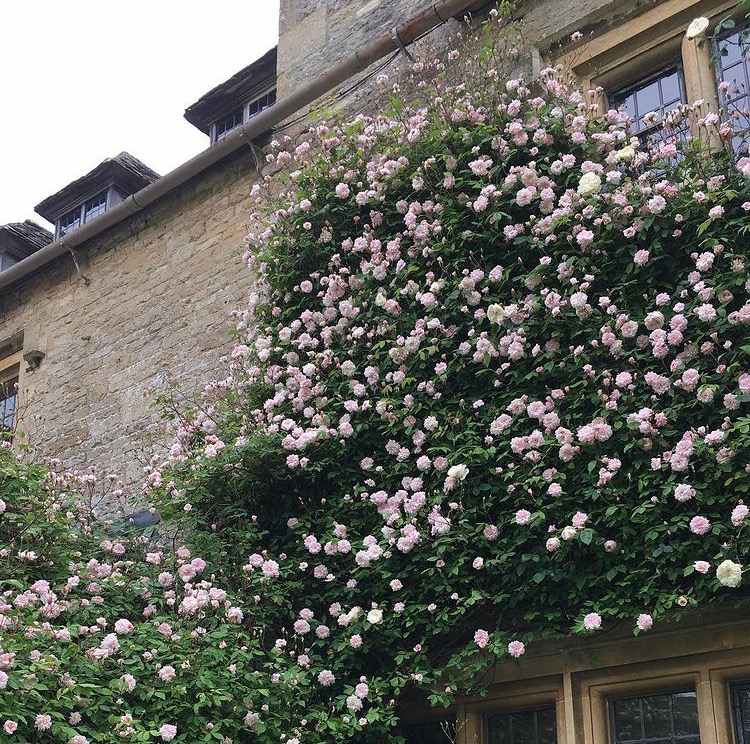
I’m sure that training took a while to do but definitely worth it, don’t you think? Totally incredible. This rose can be found at Asthall Manor.
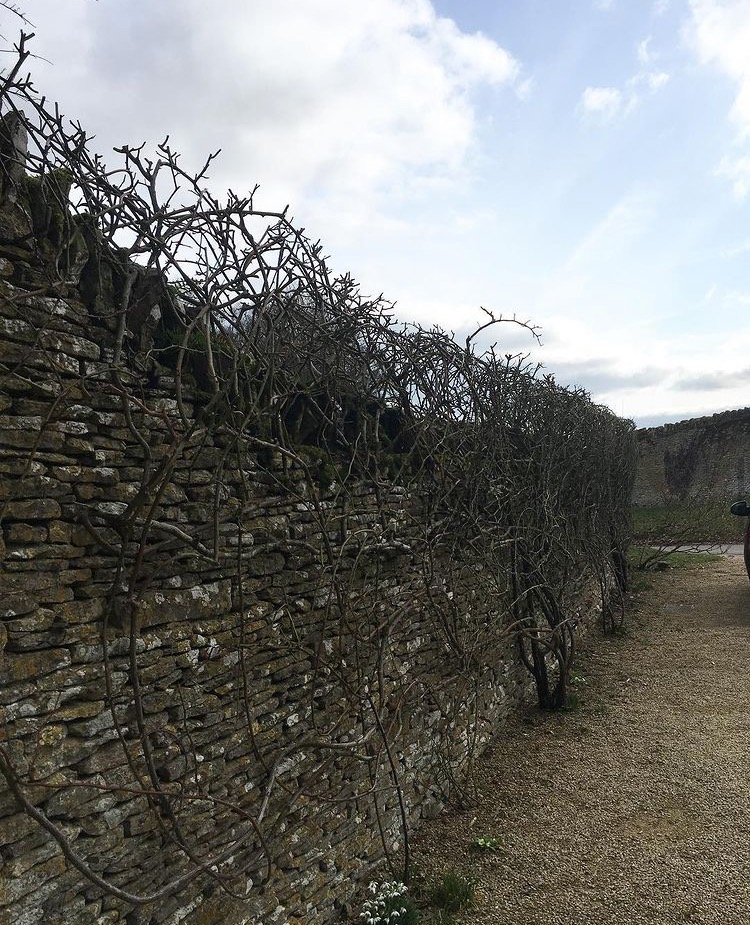
Another one from Jenny Barnes, a wall this time.
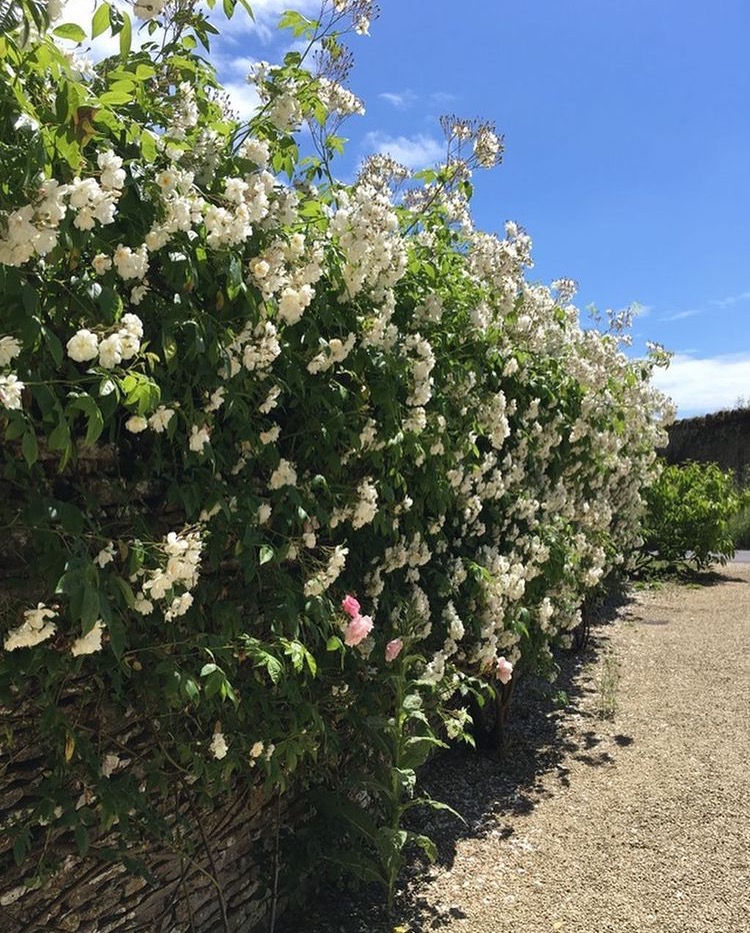
And in flower. No words.
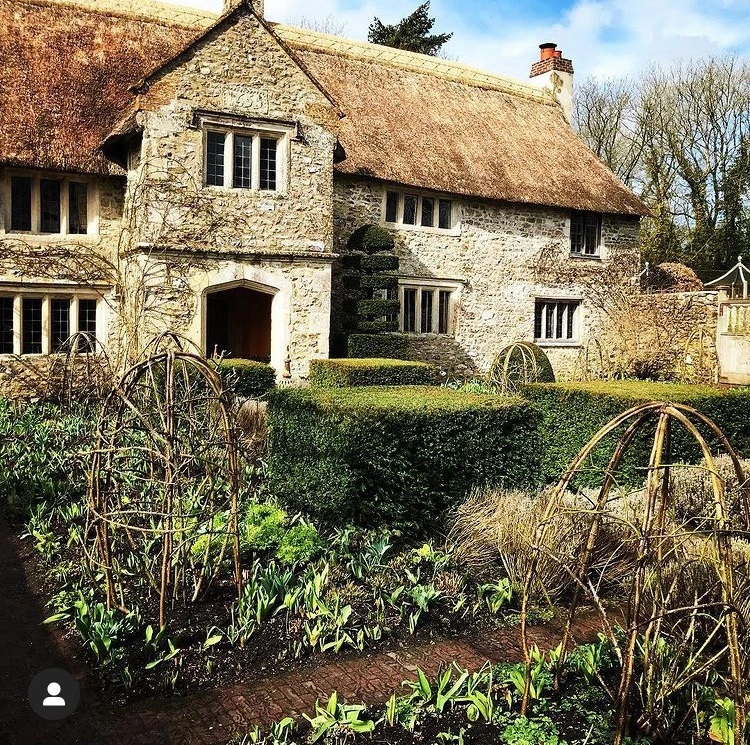
With shrub roses you can shape them around a dome like here at South Wood Farm. Adore the way this gives you height and structure in early spring too.
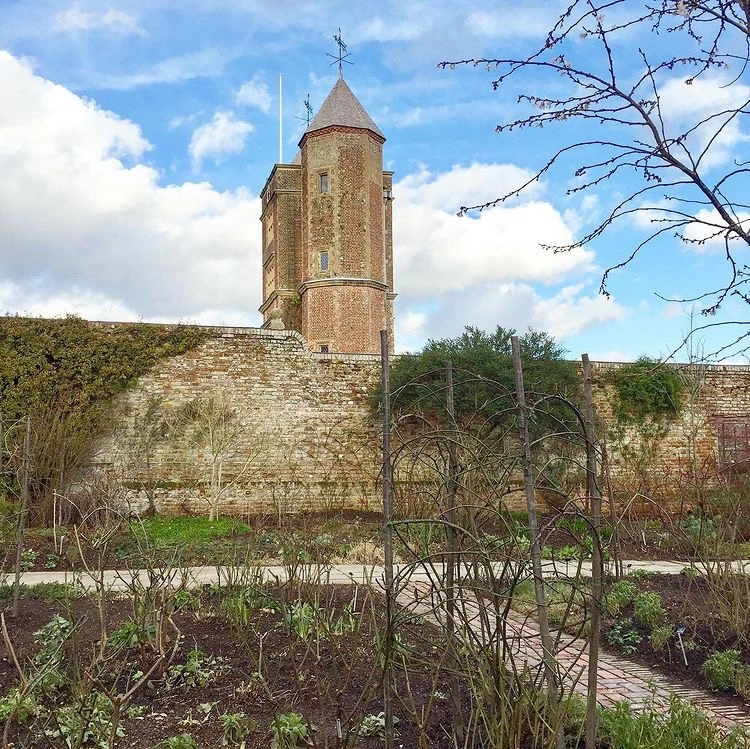
Here is one from Sissinghurst, the stems of the rose twisted and bent around four stakes.
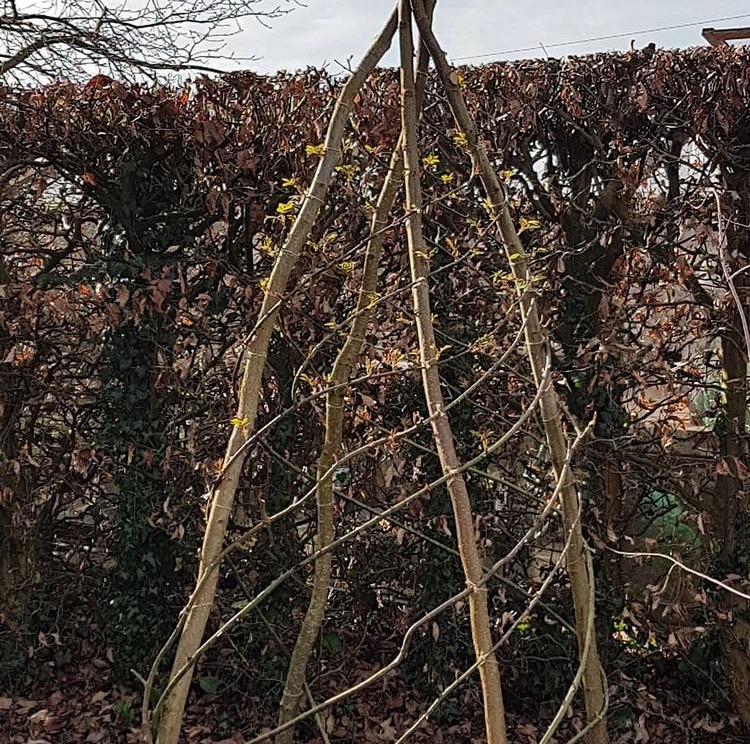
Love this look too, a wigwam with neatly spiralling rose stems around it. I’m going to attempt something similar with a couple of my roses – wish me luck!
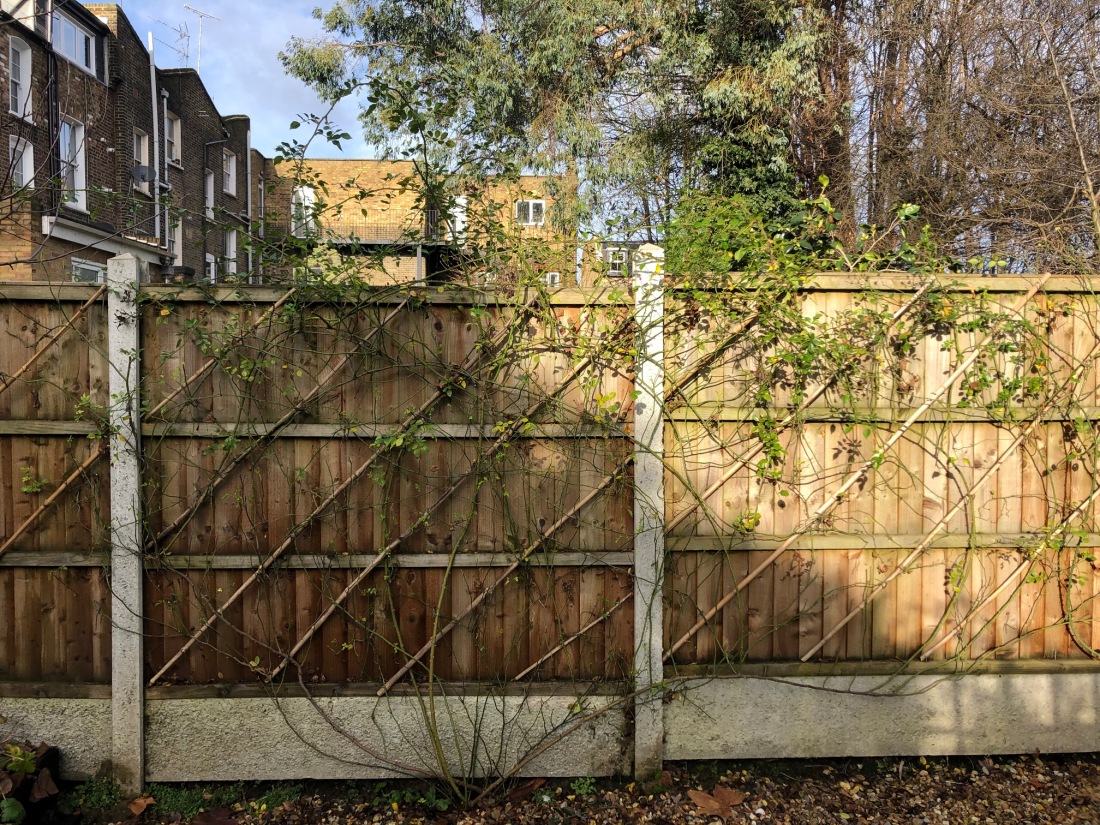
My turn – here is my rose Super Fairy, a perfect candidate for the swirly treatment with it’s soft bendy stems that stretch to five metres. You can see last years growth sticking up at the top. If I left the rose like this I would get very few flowers at the bottom of the fence and the whole thing would get really top heavy. I want it to cover the fence and have flowers from top to bottom so it needed some attention.
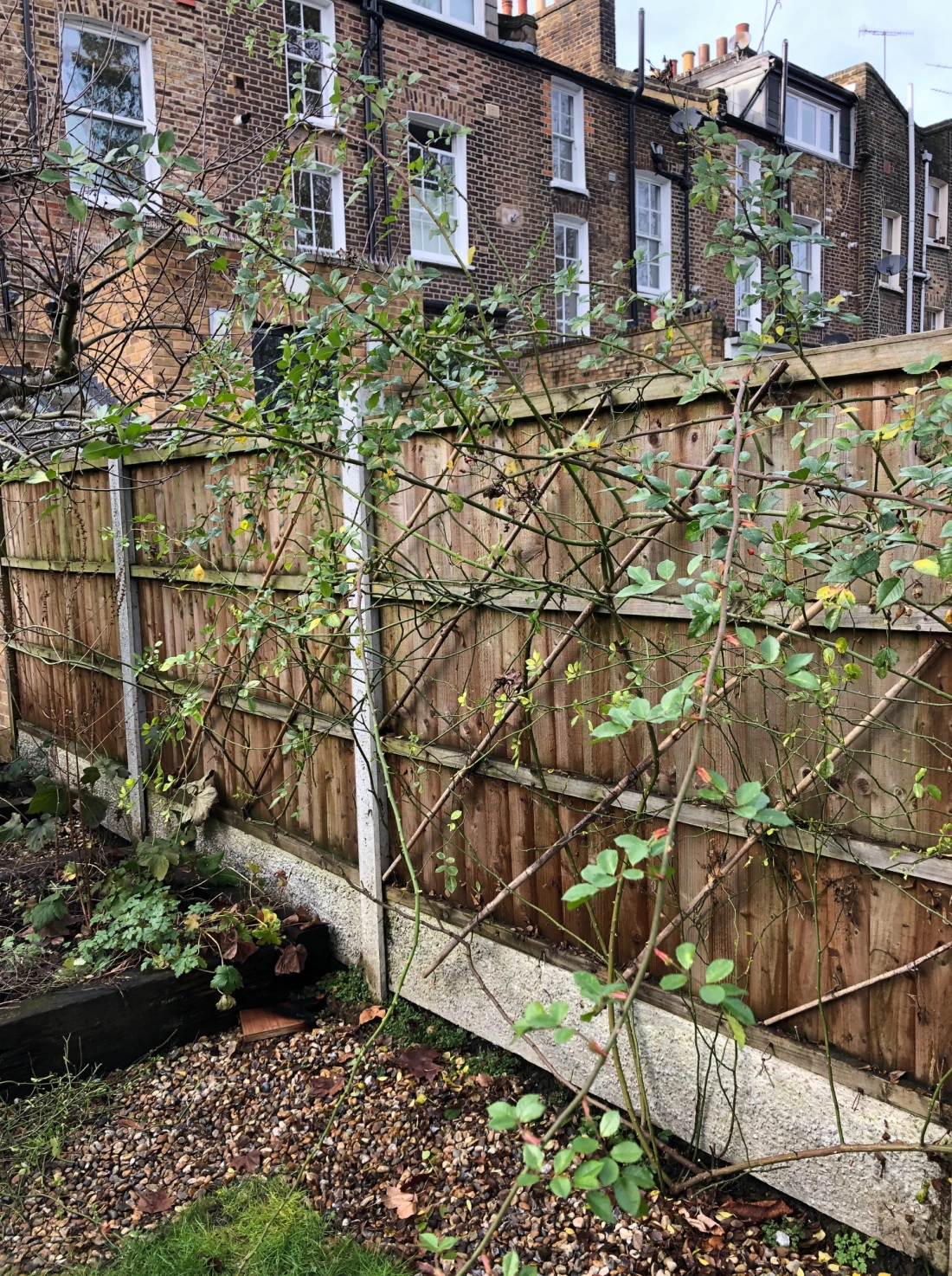
Starting to move the rose away from the fence. Not exactly a quick easy job – at one point I was completely stuck inside the whole thing with razor sharp thorns digging into my legs and scalp. Lovely.
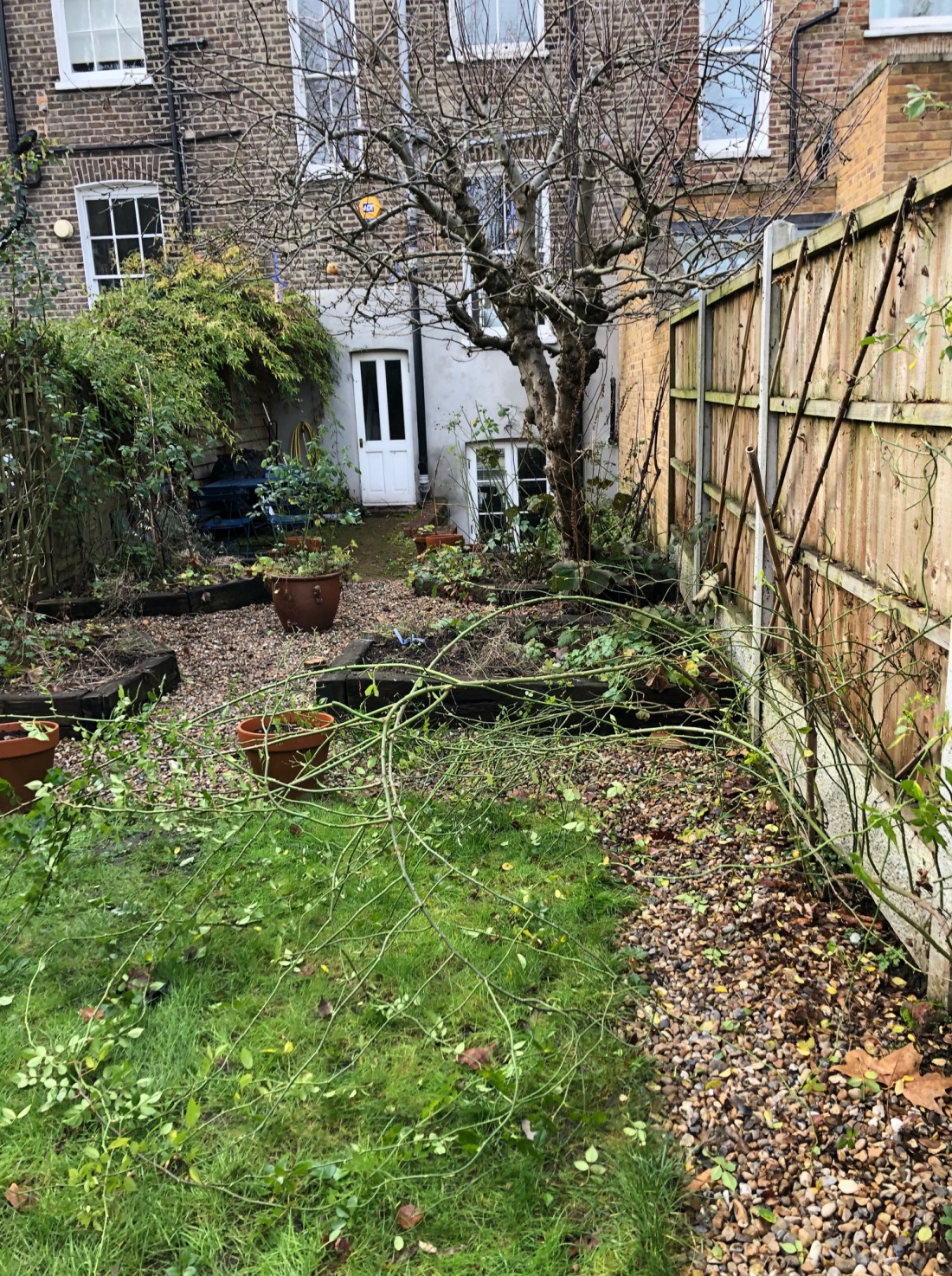
There we go! Off the wall and ready to be untangled.
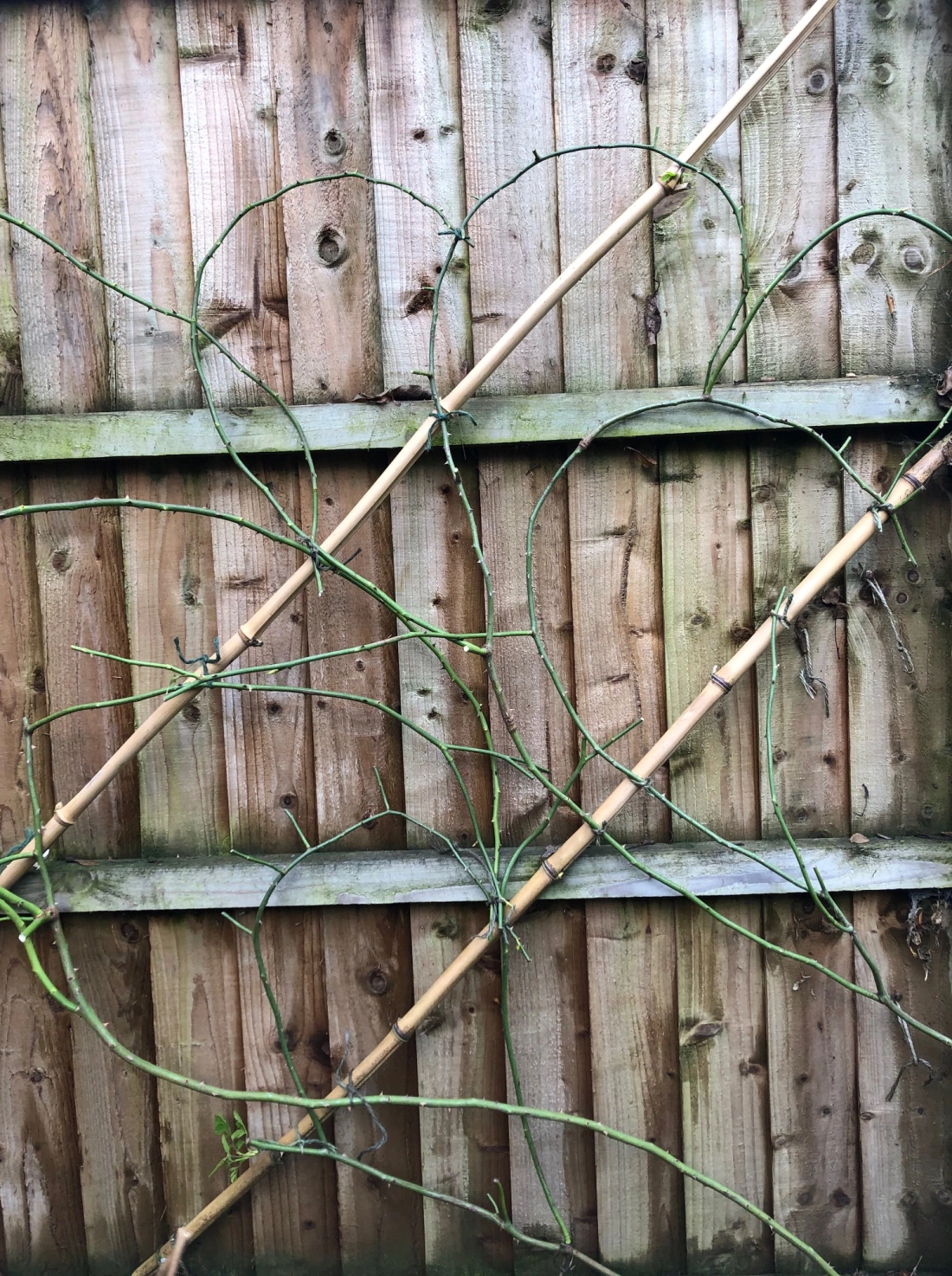
Then, after all remaining leaves were removed and any spindly stems were pruned out, I started to tie it back in. Beginning to take shape here, the loops appearing in a completely intuitive way.
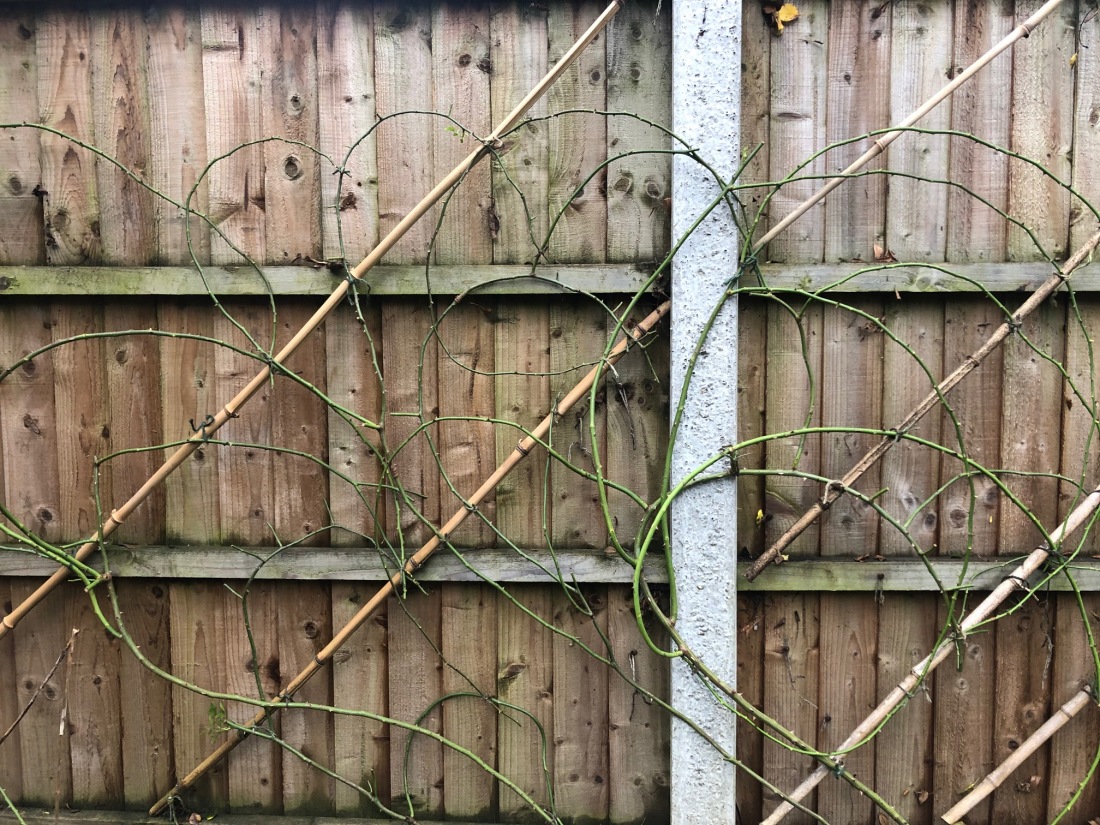
One section complete.
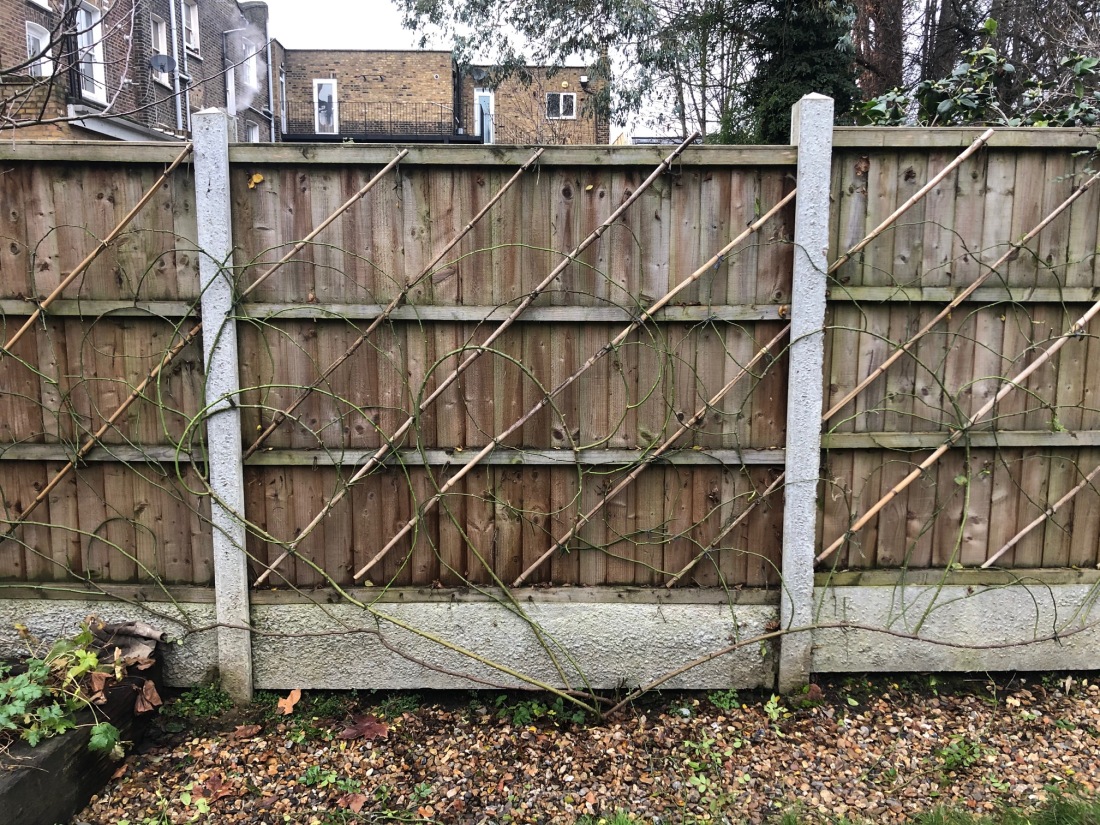
And finished! Now we just have to wait until June to see if it works. In the meantime I will enjoy the strange beauty of these loops and swirls.
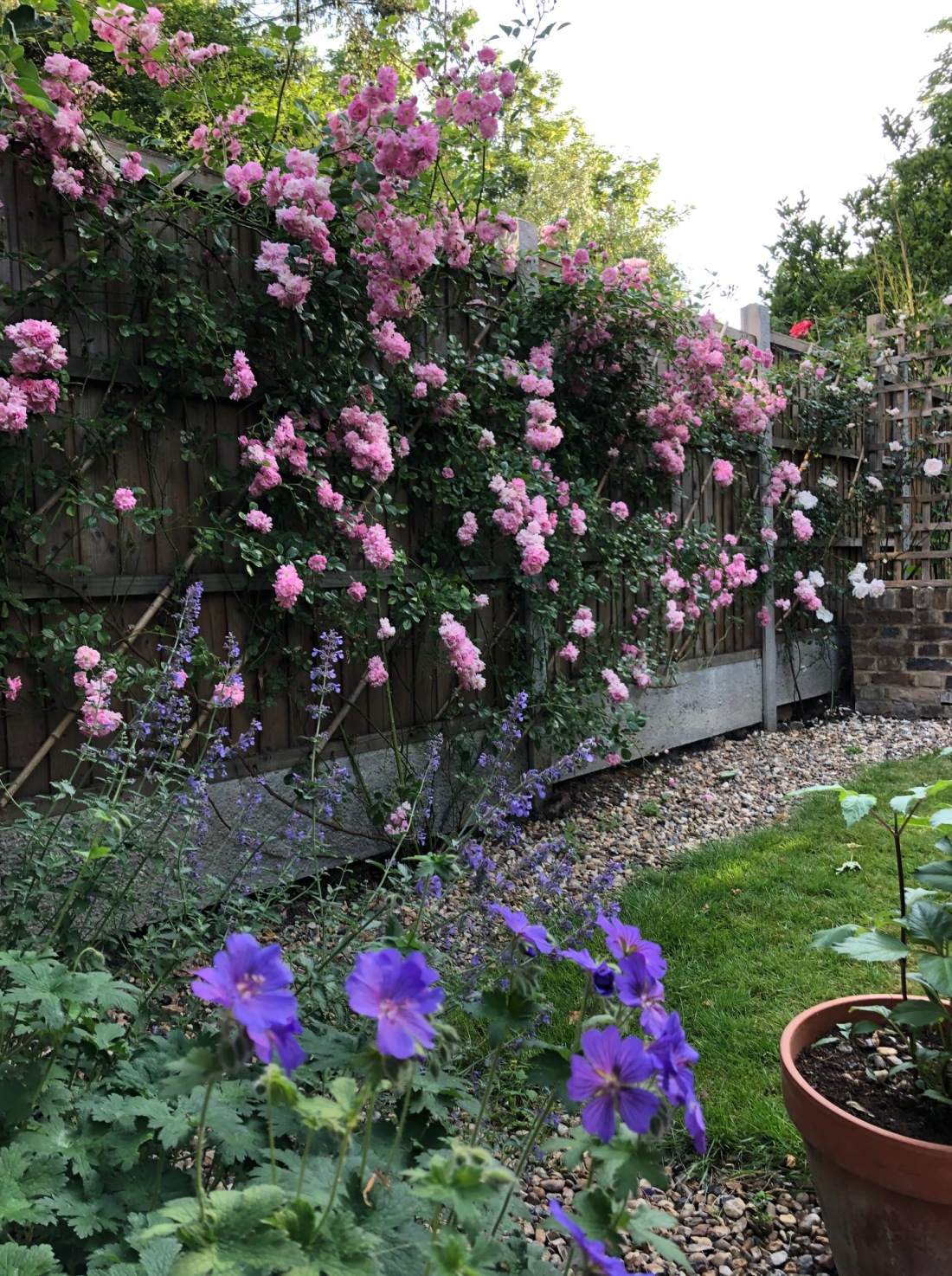
To finish off on a less dreary looking note, my rose in full bloom last summer. Hoping for an even fuller look this year – fingers crossed!


